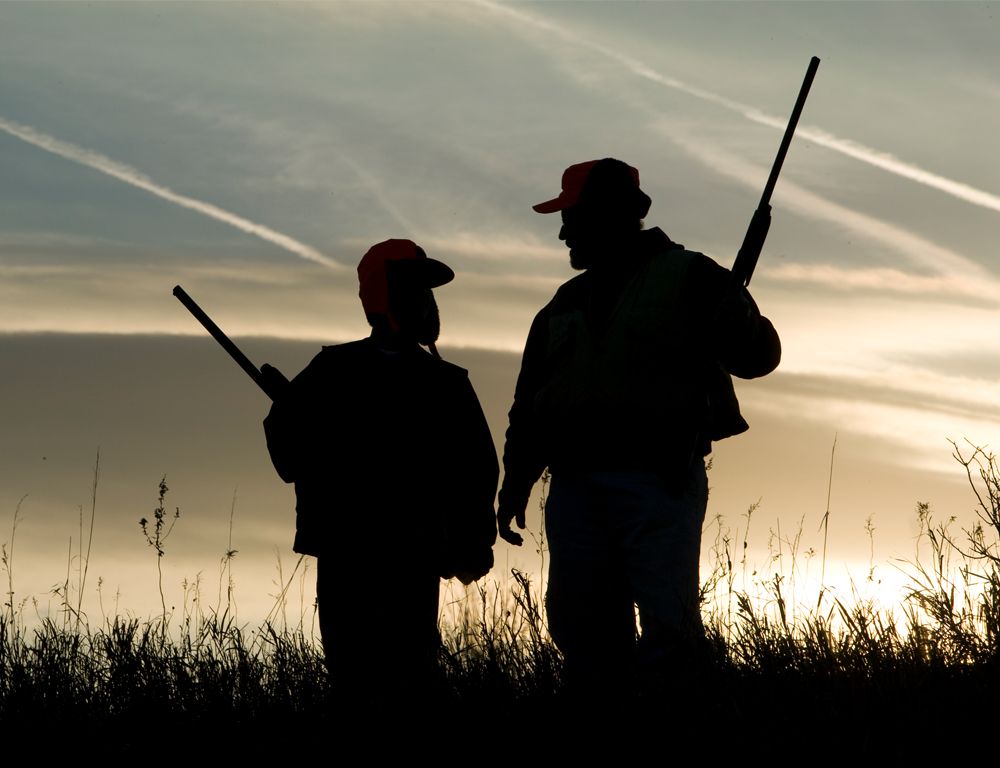The Medical Minute: Safety tips for hunters of all ages

With rifle deer season around the corner in Pennsylvania, thousands of hunters – of all ages – are preparing to head into the woods.
Falls from tree stands continue to be a common hunting accident, yet can sometimes be overlooked – for example, when hunting safety courses focus on firearms.
“We see accidental gunshot wounds, but we also see many injuries from falls,” said Kimberly Patil, injury prevention and outreach coordinator with the adult trauma program at Penn State Health Milton S. Hershey Medical Center.
She recommends hunters choose their tree stand carefully, and always use a fall arrest system, or harness, when climbing in and out of a tree. “You want to keep it on you and tethered from start to finish so if you miss a step or lose your balance, it will catch you,” she said.
Patil recommends hunters practice using their tree stands with the company of another adult before using it during hunting season. She also advises against climbing with equipment in your hands. “Use a haul line to raise or lower your equipment,” she said.
Keeping three points of contact while climbing in or out of a tree stand – two hands and one foot or two feet and one hand at all times – can also prevent falls.
Joe Hess, performance and quality improvement coordinator with the pediatric trauma program at Penn State Health Children’s Hospital, said because hunting is often a multi-generational activity, it's important to remember that the youngest hunters have much less experience and ability.
He said anyone old enough to hunt should first go through a hunter safety course to learn how to safely use his or her equipment. “You need to understand the types and parts of a gun,” he said. “You also need to understand what it means to shoot the gun.”
Hunting with younger children is less about shooting an animal and more about teaching the fundamentals. Hess recommends adjusting expectations about how long you'll be out and how far you'll go if you have children with you.
“They aren't going to want to sit out there as long as you do,” he said. “Go out the first couple hours or last couple hours of the day and bring food and clothing.”
That clothing should include fluorescent orange, per Pennsylvania Game Commission regulations. If you plan to bring a dog, make sure he or she has a vest of hunter's orange as well.
Make your presence known to other hunters by making a bit of noise or whistling to get their attention.
Before you head out, make sure others know where you are going, how you will get there, and when you expect to return. Find out ahead of time if the area where you will be hunting has cell phone reception or whether you'll need to bring hard copies of maps or download electronic ones to your phone that you can access when offline.
“Getting lost probably happens more often than people want to believe,” Patil said. “If you go out early and spend hours in the woods, it's easy to get fatigued and turned around. Or, you may not realize how quickly the sun goes down.”
She recommends taking a safety kit along that includes not only basic First Aid supplies, but extra doses of any medicine you take, a pocket knife, fire starter, waterproof matches, flashlight and tourniquet.
Hess reminds hunters to safeguard guns, knives, gun-cleaning supplies and related materials in the home so children can't access them.
When handling guns, hunters should treat every firearm as if it were loaded. That means never pointing it at anyone and never placing a finger on the trigger until ready to fire.
Patil said if hunters keep these tips in mind, it can create a better experience for everyone. “Hunting can be a really good time,” she said. “When you do it safely, it's fun and enjoyable.”
Related content:
The Medical Minute is a weekly health news feature produced by Penn State Health Milton S. Hershey Medical Center. Articles feature the expertise of faculty physicians and staff, and are designed to offer timely, relevant health information of interest to a broad audience.
If you're having trouble accessing this content, or would like it in another format, please email Penn State Health Marketing & Communications.
